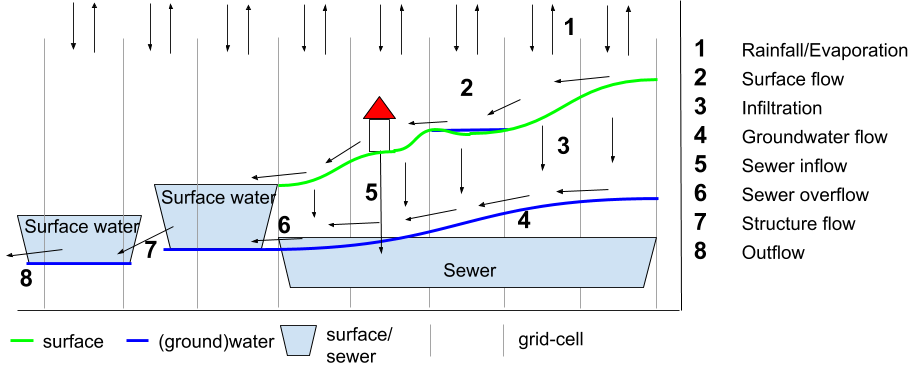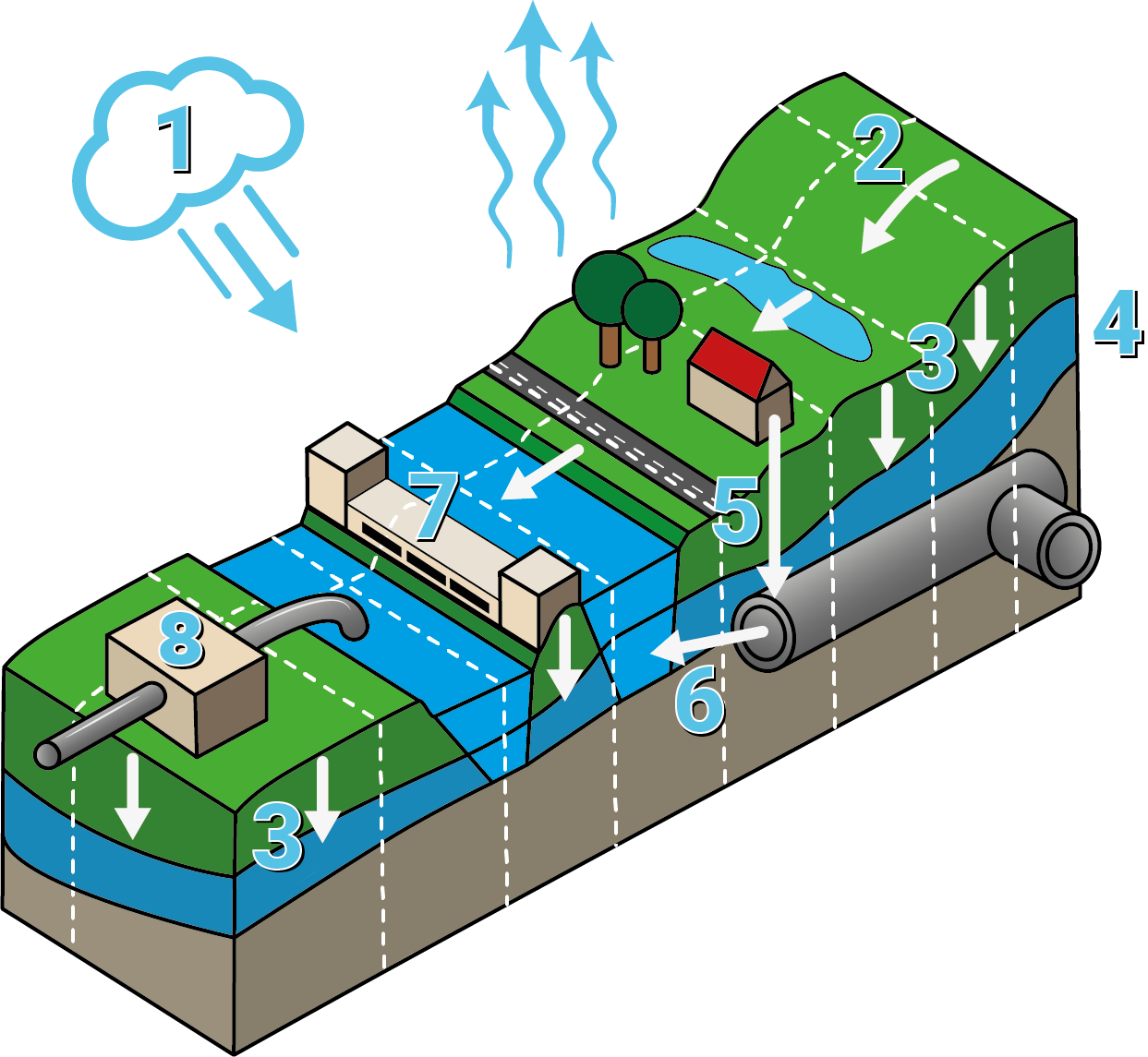Water Module theory
The following topics are described on this page:
- Introduction to the Water Module Theory
- Calculation modules
- Theories and formulas
- Computational structure and sequences
Introduction to the Water Module Theory
The Water Module in the Tygron Platform is an implementation of a 2D grid based shallow water model based on the 2D Saint Venant equations (see Surface Water Model). The module is further enhanced with infiltration, evaporation, groundwater flow and hydraulic structures. This module simulates a water model for your project area, based on rainfall, breaches and existing open water.
To perform the calculations, the project area is divided into a large grid of cells. Each cell has a specific quantity of water and specific hydrological parameters based on the data in the project. The total time which should be simulated is divided into discrete timesteps. Per timestep, each cell communicates with its adjacent cells to exchange water, based on it's water level, surface height, current flow direction and other factors. Accuracy and reliability is obtained by dividing the project area and simulation time into sufficiently small cells and steps, at the cost of more computation time. Take a look at the testbed water module project, available in all domains, to see some of the components of the Water Module in a project.
The Water Module enables users to implement a water model for their project which is accurate and delivers fast results. To ensure accuracy, the Water Module is repeatedly tested against multiple (internationally) acknowledged hydrological benchmarks and tests. Fast results are achieved by executing the water calculations on High performance GPU servers.
Calculation Models
The Water Module performs a large number of calculations to form a complete hydrological simulation. Depending on the desired viewpoint, both the overarching concepts as well as the implemented formulas can be reviewed for detailed insight into how the water overlay works.
Multiple models are implemented which in conjunction form the water model in its entirety.
- Surface model
- Underground model
- Rain model
- Evaporation model
- Sewer model
- Storage model
- Substance flow model
- Border model
Model connections
To gain insight into how this Water Overlay ties together several models, see Model connections.
Formulas
The precise calculations which govern the water overlay's simulation are many and varied, and based as much as possible on available expert knowledge.
Model related Formula's:
- Surface water level formula
- Groundwater level formula
- Surface flow formula
- Underground flow formula
- Surface evaporation formula
- Underground evaporation formula
- Surface infiltration formula
- Underground infiltration formula
Hydraulic structure related Formula's:
- Culvert formula
- Weir formula
- Breach growth formula
- Breach flow formula
- Pump formula
- Sewer Overflow formula
- Inlet formula
Module related Formula's:
Computational structure and sequences
The formulas and concepts come together in a single computational structure which is repeated a large number of times until the total simulation duration has been reached.
Order of operations
During the calculation, multiple facets have to be calculated. In each timestep, each aspect of the calculation has to be performed. Although as timesteps become smaller, the exact order of operation becomes less important, the order of operations can lead to specific behavioral details in some edge cases.
Calculations are performed in the following order:
- Horizontal surface flow and horizontal underground flow
- Rain
- Building storage
- Sewer inflow
- Surface evaporation
- Groundwater evaporation (saturated zone)
- Groundwater evaporation (unsaturated zone)
- Underground infiltration
- Surface infiltration
- Exfiltration
- Hydrological constructions (culverts, weirs, pumps, in- and outlets, outlets)
- Hydrological areas (sewer overflow, breach in- and outflow)
- Chemical movement, based on the water flow and infiltration which has occurred







